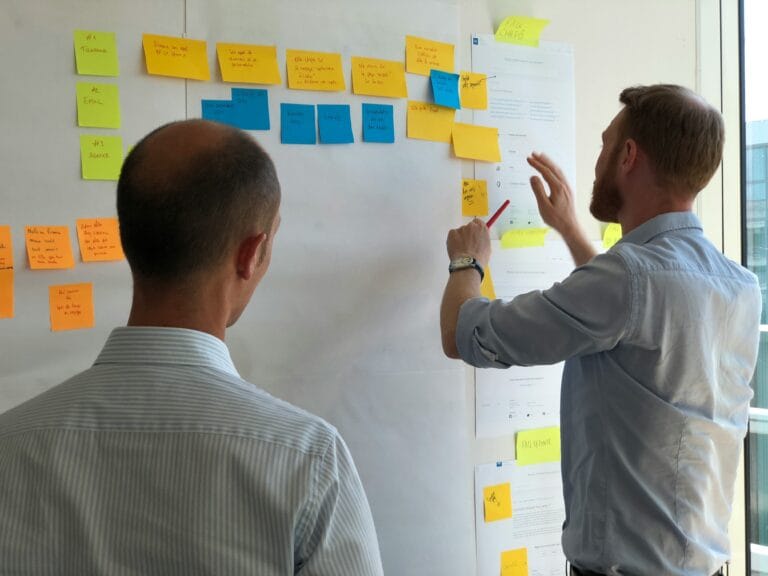Here’s what nobody tells you about year-end reviews: you’re probably looking at the wrong numbers.
Right now, you’ve got something most eCommerce operators dream about—complete visibility into twelve months of customer behavior. Your Q4 data is settling, Black Friday dust has cleared, and you’re sitting on a goldmine of insights. But if you’re just comparing this year’s revenue to last year’s, you’re missing the point entirely.
I’ve watched too many store owners celebrate a “good year” while hemorrhaging money through conversion leaks they never spotted. Traffic up 40%? Great. Revenue up 15%? Nice. But why isn’t it up 40% too? That gap isn’t bad luck. It’s fixable friction in your funnel, and December is your window to find it.
The thing about conducting an ecommerce conversion audit is that most people overthink it. They dive into GA4 planning to spend hours analyzing every metric, get overwhelmed, and end up with a spreadsheet nobody acts on. Or they hire a $15,000 agency audit that delivers a 90-page PDF that sits in their downloads folder forever.
What you actually need is a focused 15-minute year end ecommerce analysis that surfaces the revenue leaks that matter most. Not every metric. Not every page. Just the five critical pressure points where small improvements compound into serious money.
Let me show you exactly how to do this while your 2025 data is still fresh and your 2026 budget isn’t set in stone yet.
Why Your Year-End Review Is Missing the Money
You know what happens in most eCommerce year-end reviews? Someone pulls up Google Analytics, sees revenue went up 18%, high-fives the team, and calls it a win. Then everyone moves on to planning Q1 campaigns.
But here’s what that surface-level analysis completely misses: the thousands of micro-failures happening across your site that are quietly bleeding six figures from your bottom line. We’re talking about the shoppers who made it 87% through checkout before bailing. The product pages with 4,000 visits but only 12 conversions. The mobile users who bounced after 8 seconds because your images took 11 seconds to load.

The brutal truth? Most eCommerce stores convert between 2-4% of their traffic. That means 96-98% of people who visit your site leave without buying. And while you can’t convert everyone, I’d bet real money there’s a chunk of that 96% who actually wanted to buy but hit a friction point you don’t even know exists.
The December Window Nobody’s Using
Right now, in early November 2025, you’re sitting on something incredibly valuable: complete annual data from January through October, with Black Friday and Cyber Monday numbers about to roll in. This is what I call the December Window of Clarity.
It’s that sweet spot after the holiday rush settles but before everyone’s scrambling to execute Q1 plans. You’ve got full-year patterns, complete seasonal data, and actual proof of what worked (and what bombed). Most stores waste this window on inventory planning and tax prep. Smart operators use it to run a surgical ecommerce conversion audit that identifies exactly where money’s leaking.
When HappyFlops came to us, they were stuck at a 2.2% conversion rate despite solid traffic. A focused year-end ecommerce analysis revealed their product pages were designed for browsing, not buying. After restructuring their upsell flow and fixing mobile checkout friction, their conversion rate jumped to 12.5%. Same traffic. Same products. Completely different revenue.
Why 15 Minutes Beats 15 Hours
Here’s where most year-end reviews go sideways: they try to analyze everything. Every metric. Every channel. Every product SKU. You end up with a 47-slide deck full of charts that tell you nothing actionable.
The conversion rate optimization checklist I’m about to walk you through takes 15 minutes. Not 15 hours. Not a full day with your analytics team. Fifteen focused minutes examining five critical metrics that have actual dollar amounts attached to them.
We’re not looking at vanity metrics like page views or time on site. We’re not building complex attribution models or debating whether that Instagram campaign really drove those sales. This ecommerce performance review focuses on one thing: finding the specific places where ready-to-buy customers are hitting walls.
Think about it this way. If your checkout abandonment rate is 68% (pretty typical, honestly), and you’re driving 10,000 people to checkout monthly, that’s 6,800 people who got their credit card out and then changed their mind. If your average order value is $85, you’re watching $578,000 walk away every single month. That’s not a marketing problem. That’s a conversion problem with a clear price tag.
The difference between a retrospective exercise and a strategic advantage for 2026 comes down to this: are you just documenting what happened, or are you identifying the specific friction points that will make next year different?
Most stores know their overall conversion rate. Very few can tell you exactly which step in their funnel is costing them the most money, or why your shoppers leave before buying, or which product categories have the worst add-to-cart rates despite getting tons of traffic. That granular insight? That’s what turns a year-end review into an actual competitive advantage.
Okay, so you’ve got your analytics open. Now what? Most people start clicking around randomly, checking whatever metric catches their eye first. Maybe bounce rate. Maybe time on site. It feels productive, but you’re basically throwing darts blindfolded.
Here’s what actually works: a systematic ecommerce conversion audit that examines five specific metrics in sequence. Not 47 metrics. Not a conversion rate optimization checklist with 200 items. Just five numbers that tell you exactly where your money is disappearing.
Why These Five Metrics (And Not the Other 50)
Think about your customer journey like a funnel with five critical pressure points. At each stage, friction accumulates. A slow product page makes someone hesitate. A confusing cart makes them second-guess. A clunky mobile checkout makes them quit entirely. These problems don’t exist in isolation. They compound.
That’s why this framework focuses on:
- Checkout abandonment rate: Where the final deal breaks down
- Product page bounce rate: Your first impression problem
- Cart-to-purchase conversion: The bridge most people fall off
- Mobile vs desktop performance gap: The device divide costing you sales
- High-traffic, low-conversion pages: Your biggest missed opportunities

You might be wondering why we’re not looking at traffic sources or email open rates or social engagement. Simple: those metrics tell you about awareness and interest. These five tell you about revenue leakage. There’s a difference between knowing 10,000 people visited your site and knowing that 7,800 of them bounced from your product pages within 8 seconds.
The Journey Map Nobody Talks About
Here’s how these metrics connect to actual shopper behavior:
Stage 1: Someone lands on your product page (bounce rate tells you if they stay)
Stage 2: They add to cart (mobile vs desktop gap reveals device friction)
Stage 3: They view their cart (cart-to-purchase shows if they proceed)
Stage 4: They hit checkout (abandonment rate exposes final obstacles)
Stage 5: Meanwhile, certain pages get tons of traffic but convert terribly (high-traffic, low-conversion pages)
According to Baymard Institute’s research, the average cart abandonment rate sits at 70.22%. But here’s the kicker: they found that better checkout design alone could increase conversions by 35.26%. That’s not a typo. One-third more revenue from the same traffic. And once they complete their purchase, your order confirmation becomes another opportunity to build loyalty and drive repeat purchases.
When Wonderboo tackled their conversion friction systematically, they saw conversion rates jump 178%. They didn’t reinvent their products or double their ad spend. They identified where shoppers were getting stuck and fixed those specific points.
Platform-Agnostic By Design
You know what’s great about this year-end ecommerce analysis framework? It works whether you’re on Shopify, WooCommerce, BigCommerce, or something custom-built. Because we’re not measuring platform features. We’re measuring human behavior.
Shoppers don’t care that you’re using Shopify’s native checkout or a custom solution. They care that checkout takes 14 steps when it should take 5. They care that your product images take 11 seconds to load on mobile. They care that shipping costs appear out of nowhere at the last second.
These universal friction points show up everywhere. The ecommerce performance review process stays consistent regardless of your tech stack. You’re looking for the same behavioral patterns, the same drop-off points, the same conversion killers. Understanding why shoppers leave before buying through scroll depth analysis can reveal critical engagement issues that impact these metrics.
So whether you’re running a $50K/month store or a $5M/month operation, this framework gives you a clear starting point. No complex attribution models. No expensive tools required. Just five metrics that reveal where your next 20-30% revenue increase is hiding.
Now let’s break down each metric and show you exactly what to look for.
Metric #1: Checkout Abandonment Rate—Finding Your Most Expensive Leak
Where to Find Your Checkout Abandonment Data
Let’s start with the basics. Pull up GA4 and navigate to Monetization > Ecommerce purchases. You’re looking for the relationship between your “begin_checkout” events and actual “purchase” events. The gap between those two numbers? That’s your checkout abandonment rate.
If you’re on Shopify, WooCommerce, or BigCommerce, your platform analytics already tracks this natively. Look for “Checkout Started” versus “Orders Completed” in your reports. Most platforms make this pretty visible because, well, it’s that important.
Here’s the math: If 1,000 people started checkout last month and only 280 completed it, you’re sitting at 72% checkout abandonment. According to Baymard Institute’s research, the average across eCommerce is 70.22%. But average doesn’t mean acceptable.
What “Good” Actually Looks Like
Under 60% checkout abandonment? You’re doing something right. Between 60-70%? You’re in the pack, but there’s real money on the table. Above 75%? That’s a five-alarm fire that deserves immediate attention in your year-end ecommerce analysis.

Let me put some actual dollars behind this. Say you’re running a $500K annual revenue store with that 72% abandonment rate. Quick calculation: if you dropped that to 60% (totally achievable), you’d recover roughly $180,000 in revenue. That’s not a typo. That single improvement could fund your entire 2026 marketing budget.
When Wonderboo tackled their checkout friction, they saw conversion rates jump 178%. The biggest lever? Fixing the exact abandonment issues we’re about to diagnose.
The Diagnostic Questions That Matter
Now dig deeper into where people are actually bailing. Set up a funnel report in GA4 showing each checkout step: cart view > shipping info > payment method > order review > purchase. Which step has the biggest drop?
Common culprits in your ecommerce conversion audit:
- Shipping cost reveal: 48% of shoppers abandon when unexpected shipping fees appear. If your abandonment spikes at the shipping step, this is your smoking gun.
- Forced account creation: 26% of people nope out when they have to create an account. Guest checkout isn’t optional anymore, it’s table stakes.
- Payment friction: Limited payment methods or a clunky payment interface kills 13% of checkouts. If you’re not offering Apple Pay, Google Pay, and PayPal alongside cards, you’re leaving money behind.
- Mobile checkout hell: Mobile abandonment sits at 75.5%, way higher than desktop’s 69%. If your mobile checkout requires pinch-zooming or has tiny tap targets, fix it yesterday.
Calculate Your Actual Dollar Problem
Here’s the formula that should make your stomach drop a little:
Annual Revenue ÷ (1 – Current Abandonment Rate) × (Current Rate – Target Rate) = Money You’re Losing
For that $500K store at 72% abandonment targeting 60%: $500K ÷ 0.28 × 0.12 = $214,285 in recoverable revenue. Even hitting 65% instead of 60% would net you an extra $125,000.
Three Immediate Fixes for Your Conversion Rate Optimization Checklist
1. Show total costs upfront. Add a shipping calculator on the cart page, before checkout even starts. Or better yet, offer free shipping above a threshold. 80% of customers will add items to hit that minimum. Consider adding gamification in your cart to make reaching that threshold feel rewarding.
2. Make guest checkout the default. Don’t hide it. Don’t make account creation feel mandatory. Put “Continue as Guest” front and center. You can always capture their email for order updates, and your order confirmation becomes the perfect opportunity to encourage account creation after the sale is secure.
3. Add express payment buttons. Apple Pay, Google Pay, and Shop Pay can cut checkout time from 4 minutes to 30 seconds. Put these options at the top of your payment step, not buried below the credit card form.
Look, checkout abandonment isn’t just a metric to track in your ecommerce performance review. It’s the single highest-value leak in most stores. Understanding why your shoppers leave before buying through scroll depth analysis can reveal whether they’re even seeing your checkout optimizations. The data’s sitting right there in your analytics, waiting to tell you exactly where six figures are walking out the door. You just have to actually look at it and do something about it.
Metric #2 & #3: Product Page Bounce Rate and Cart-to-Purchase Conversion—The Middle Funnel Reality Check
The Product Page Reality: When 60% Bounce Means Money’s Walking Out
Okay, so you’ve looked at your site-wide conversion rate. Now let’s get specific about where people are actually bailing. Product page bounce rate is one of those metrics that tells you exactly what you need to know: are shoppers interested enough to keep exploring, or are they hitting the back button faster than you can say “add to cart”?
Here’s how to find this in GA4. Head to Reports, then Engagement, then Pages and Screens. You’ll see a list of all your pages with their bounce rates. Now, this is where it gets useful: filter by your product page template or URL pattern (usually something like “/products/” or “/shop/”). Look at the bounce rate column for those pages specifically.
What you’re looking for: anything above 60% needs your attention. According to industry data from ConvertCart, most eCommerce product pages should be in the 26-40% range. When you’re seeing 60%, 70%, or higher, that’s not just a bad day. That’s a systematic problem with how you’re presenting your products.

Think about it this way: a high product page bounce rate means people landed on your product, looked around, and decided “nope, not for me.” Maybe your images aren’t good enough. Maybe your product descriptions are thin. Maybe you’re missing critical information like sizing guides or material details. When HappyFlops came to us with this exact problem, we found their product pages were missing key trust signals and clear value propositions. After redesigning their product presentation, their conversion rate jumped to 12.5%.
Cart-to-Purchase: The Metric That Reveals Your Pricing Honesty
Now let’s talk about the other side of this equation: cart-to-purchase conversion. This one’s simple to calculate but brutal in what it reveals. Take your total purchases and divide by your add-to-cart events. That’s your cart conversion rate.
In GA4, you’ll find this under Events. Look for “add_to_cart” events and “purchase” events. Most platforms like Shopify or WooCommerce track these automatically, but double-check your event tracking is working. If you’re seeing a cart-to-purchase rate below 35%, you’ve got a problem. Healthy stores typically see 40-50% here.
What does a low cart conversion actually mean? Usually, it’s one of two things: surprise costs or a terrible cart experience. You know the drill. Someone adds a $50 item to cart, gets to checkout, and suddenly it’s $73 with shipping and handling. They bail. Or your cart page is so cluttered with upsells and pop-ups that people can’t figure out how to actually complete their purchase.
The Diagnostic Framework: Reading the Tea Leaves
Here’s where your year-end ecommerce analysis gets really useful. Look at these two metrics together using funnel analysis:
- High product bounce + low cart conversion: Your product presentation is failing. People aren’t convinced enough to add to cart in the first place, and the few who do are getting scared off by something in your cart or checkout flow.
- Low product bounce + low cart conversion: This is the classic “pricing surprise” problem. Your products look great, people are adding them to cart, but then they’re abandoning when they see the total cost. Check your shipping costs, taxes, and any hidden fees.
- High product bounce + decent cart conversion: You’re attracting the wrong traffic, but the people who do engage are converting. Time to look at your SEO and ad targeting.
If you’re using Shopify, WooCommerce, or BigCommerce, your platform analytics will show you this data too, sometimes in clearer formats than GA4. Don’t ignore those native dashboards during your ecommerce performance review.
What to Actually Do About It
If your product page bounce rate is high, start with your top 10 products by traffic. Audit each one:
- Are there at least 5-7 high-quality images showing different angles?
- Is the product description actually helpful, or is it just marketing fluff?
- Do you have size guides, material specs, care instructions?
- Are there reviews visible above the fold?
- Is your value proposition clear in the first three seconds?
If your cart conversion is low, audit your cart and checkout experience. Mystery shop your own store. Add something to cart and see what happens. Are there unexpected costs? Is the checkout process confusing? Are you asking for too much information? Sometimes the fix is as simple as showing estimated shipping costs earlier in the funnel. Consider implementing gamification in your cart to make the checkout process more engaging and reduce abandonment.
The beauty of running this ecommerce conversion audit during your year-end review is you can see patterns across the entire year. Maybe your cart conversion tanks during Q4 when shipping gets expensive. Maybe certain product categories always have high bounce rates. These insights tell you exactly where to focus your optimization efforts for 2026.
Alright, now we’re getting into the metrics that separate the operators who just track numbers from the ones who actually make money from them. These two are sneaky. They don’t show up in your standard reports, but they’re often where the biggest wins are hiding.
The Mobile-Desktop Gap: When You’re Accidentally Running Two Different Stores
Here’s something that’ll make you uncomfortable. Pull up GA4 right now and segment every metric we’ve talked about by device. Go to your Explorations tab, create a new free-form exploration, add “Device category” as a dimension, and then add your conversion rate, bounce rate, and average session duration as metrics.
What you’re looking for is the gap. Industry data shows desktop typically converts around 4.3% while mobile sits at 2.2%. But here’s the thing: if your gap is bigger than 10-15 percentage points, you’ve got a problem that’s costing you serious money.
If desktop converts at 3.5% but mobile at 1.8%, and mobile represents 60% of traffic, you’re essentially running two stores with one performing at half capacity.
Think about that for a second. You’re paying the same acquisition costs for both audiences, but half your traffic is converting at dramatically lower rates. That’s not a minor optimization opportunity. That’s a structural problem in your year-end ecommerce analysis that’s bleeding revenue every single day.
The math gets ugly fast. Let’s say you’re getting 50,000 monthly visitors, 30,000 from mobile. If mobile converts at 1.8% instead of matching your desktop’s 3.5%, you’re losing 510 orders per month. At a $75 average order value, that’s $38,250 in monthly revenue, or nearly half a million annually.
What Large Gaps Actually Tell You
When you see mobile conversion rates significantly lagging desktop, it’s usually one of three culprits:
- Your mobile checkout is a nightmare. Forms that require 47 taps to complete. Payment options that don’t work smoothly on phones. Autofill that doesn’t actually work.
- Your page speed is killing you on mobile. Those hero images that look gorgeous on desktop? They’re taking 8 seconds to load on 4G. By second three, your customer is already on your competitor’s site.
- Your mobile UX wasn’t actually designed for mobile. It’s just your desktop site squeezed onto a smaller screen. Buttons are too small. Navigation is confusing. Product images require pinch-and-zoom.
When HappyFlops redesigned their mobile checkout experience, focusing specifically on reducing friction in the payment flow, they saw their mobile conversion rate jump to match their desktop performance, contributing to their overall 12.5% conversion rate. The traffic was always there. The opportunity was always there. They just had to stop treating mobile like an afterthought.
High-Traffic, Low-Conversion Pages: The Gold Mine You’re Ignoring
Now let’s talk about the second metric that most ecommerce performance reviews completely miss. You’ve got pages on your site right now that are getting thousands of visits but converting like absolute garbage. And here’s why they’re so valuable: the traffic acquisition cost is already paid.
You don’t need to spend another dollar on ads. You don’t need to build backlinks or create content. You just need to fix what’s broken on pages that are already attracting visitors.
Here’s how to find them in GA4. Go to Explorations, create a new free-form exploration. Add “Page path and screen class” as your dimension. Then add these metrics: Sessions, Ecommerce purchases, and Purchase conversion rate. Sort by sessions descending.
What you’re looking for are pages in your top 20 by traffic that have conversion rates significantly below your site average. Maybe your site converts at 2.8%, but you’ve got a product category page getting 4,000 monthly visits that converts at 0.9%. That’s your gold mine.
Why These Pages Are Actually Opportunities, Not Problems
Think about it this way. If a page is getting significant traffic, Google thinks it’s relevant. Users are clicking through from search or ads. But something on that page is failing to close the deal. Maybe the call-to-action is buried below the fold. Maybe there are no trust signals. Maybe the product descriptions are confusing or incomplete.
When you fix conversion on high-traffic pages, you’re essentially getting free revenue. Every percentage point improvement in conversion on a page with 4,000 monthly visits is 40 additional orders. At $75 AOV, that’s $3,000 in monthly revenue from fixing one page.
Your conversion rate optimization checklist for these pages should focus on three things:
- Clarity: Is it immediately obvious what action you want visitors to take? Can they find the “Add to Cart” button in under two seconds? Visual hierarchy is your secret weapon for making CTAs impossible to miss.
- Trust: Are there reviews visible? Security badges? Clear return policies? Especially for higher-priced items, trust signals can make or break conversion.
- Information: Are you answering the questions visitors have before they even ask them? Size guides, material details, shipping timeframes—these aren’t nice-to-haves, they’re conversion requirements. Understanding why your shoppers leave before buying can reveal critical content gaps.
Start with your top five high-traffic, low-conversion pages. Run them through this framework. I guarantee you’ll find obvious issues that nobody’s bothered to fix because everyone’s too focused on driving more traffic instead of converting what they already have.
This is exactly the kind of insight that makes your year-end ecommerce analysis actually valuable instead of just a retrospective exercise. You’re not just looking at what happened. You’re identifying specific, high-value opportunities for 2026 that most of your competitors will completely miss.
Okay, so you’ve run the audit. You’ve got a list of findings that probably looks something like a mechanic’s estimate after they inspect your car. Now what? This is where most people stall out. They’ve diagnosed the problems but never actually fix them.
Let’s flip that script. You need a prioritization framework that’s actually practical, not some fancy consultant spreadsheet that requires three hours of setup.
Calculating What Each Fix Is Actually Worth
Before you prioritize anything, you need to know what each problem is costing you. Here’s the simple formula that converts audit findings into dollar amounts:
Revenue Opportunity = Traffic × Current Conversion Rate × Average Order Value × Improvement Percentage
Let’s say your product pages get 50,000 monthly visits, you’re converting at 1.2%, your AOV is $85, and you think you can bump conversion to 2% (a 0.8 percentage point improvement). That’s:
50,000 × 0.008 × $85 = $34,000 in additional monthly revenue
That’s $408,000 annually from fixing one conversion leak. Suddenly that redesign doesn’t seem so optional, right?
The Four-Quadrant Priority Matrix
Now take all your findings and plot them on a simple grid. One axis is potential impact (the dollar figure you just calculated). The other is implementation effort (time, resources, complexity).
Quick Wins (High Impact, Low Effort): These go first. Always. We’re talking things like fixing broken mobile buttons, adding trust badges to checkout, or simplifying your form fields. When Wonderboo streamlined their checkout process, they saw conversion rates jump 178% because they tackled these obvious friction points first.
Major Projects (High Impact, High Effort): These are your Q1 focus areas. Complete mobile redesigns. Checkout overhauls. Product page restructuring. Big revenue potential, but they need dedicated resources and time.
Fill-Ins (Low Impact, Low Effort): Do these when you have spare bandwidth. Updating footer links, refreshing some product descriptions, minor copy tweaks. They’re not moving the needle much, but they’re easy wins.
Time-Wasters (Low Impact, High Effort): Just don’t. Seriously. That custom animation your designer wants? The elaborate quiz funnel that needs two months of dev work but only affects 2% of visitors? Park them.
Your Q1 2026 Timeline Template
January 2026: Knock out all Quick Wins. Fix the obvious stuff. Get some momentum. Your team needs early wins to stay motivated.
February 2026: Start your biggest Major Project. If checkout abandonment is above 75%, that’s always priority one. Period. A streamlined checkout process can easily boost your overall conversion rate by 20-30%. Don’t forget that your order confirmation page is also an opportunity to drive additional value once you’ve fixed the checkout itself.
March 2026: Continue the Major Project while testing results from January fixes. If your mobile-desktop conversion gap exceeds 20%, this becomes your other major project. That gap is literally telling you that one-fifth of your potential customers are having a terrible experience. Understanding why shoppers leave before buying can help you identify exactly where mobile users are dropping off.
Pro tip: Schedule your Q1 review for March 31st. You want three full months of data to measure real improvement, not just random fluctuation.
Making This a Habit, Not a One-Time Thing
Here’s what separates stores that consistently grow from ones that plateau: they make this ecommerce conversion audit a quarterly ritual. Not annual. Quarterly.
The same 15-minute framework works year-round. Set a calendar reminder for the last week of every quarter. Run the five metrics. Compare to last quarter. Adjust your roadmap. That’s it.
Think about it like this: your competitors are probably doing their year-end ecommerce analysis once (maybe), patting themselves on the back, and moving on. You’re going to be checking in four times a year, catching problems early, and staying ahead of shifts in customer behavior. Building detailed user personas during these quarterly reviews helps you understand those behavioral shifts better.
Your action item right now: Complete this audit before December 31st while your complete 2025 data is fresh and your team actually has time to look at it. Then block out March 31st, 2026 on your calendar for the Q1 review. Seriously, go do that now. I’ll wait.
The stores winning in 2026 won’t be the ones with the biggest budgets. They’ll be the ones who actually measure what matters, fix what’s broken, and repeat the process before their competitors even notice there’s a problem.
Your Next 15 Minutes Could Change Your Whole Year
Look, you can bookmark this article and tell yourself you’ll run this audit “when things slow down.” But here’s the reality: things never slow down in eCommerce. January hits, you’re dealing with returns and exchanges. February brings Valentine’s prep. Before you know it, you’re in Q2 wondering why your numbers aren’t where they should be.
The stores that win in 2026 aren’t the ones with the biggest budgets or the fanciest tech stack. They’re the ones who take 15 minutes this week to actually look at where their customers are getting stuck. That’s it. That’s the difference between celebrating another “okay” year and actually fixing the leaks that are costing you real money.
You already have the data. You already know how to use GA4. You just need to stop treating your ecommerce performance review like homework and start treating it like the strategic advantage it actually is. Run this conversion rate optimization checklist now while your 2025 numbers are fresh, prioritize your top three fixes, and get them live before Valentine’s Day traffic hits.
Because the truth is, your competitors are probably still celebrating their revenue growth without asking why it wasn’t higher. That’s your opening.
What’s the one conversion metric you’ve been avoiding looking at? The one you know is probably bad but haven’t wanted to confirm? That’s exactly where you should start.










